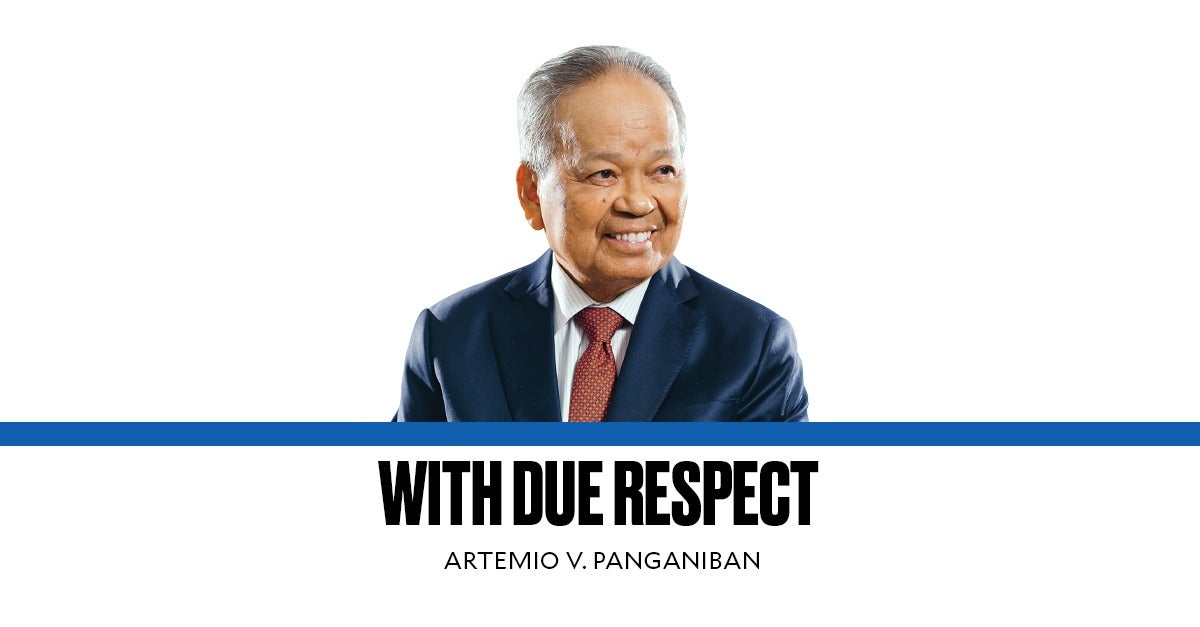A Filipino street festival on Saturday in the Canadian city of Vancouver took a horrific turn when a vehicle plowed into the crowd, killing at least nine people and leaving several others injured.
This might not be the typical expat blog, written by a German expat, living in the Philippines since 1999. It's different. In English and in German. Check it out! Enjoy reading! Dies mag' nun wirklich nicht der typische Auswandererblog eines Deutschen auf den Philippinen sein. Er soll etwas anders sein. In Englisch und in Deutsch! Viel Spass beim Lesen!
You plan to move to the Philippines? Wollen Sie auf den Philippinen leben?
Ja, es gibt tonnenweise Webseiten, die Ihnen sagen wie, warum, vielleicht warum nicht und wann Sie am besten auf die Philippinen auswandern könnten. Ich möchte Ihnen in Zukunft "zwischen den Zeilen" einige zusätzlichen Dinge berichten und erzählen. Viel Spass beim Lesen und Gute Unterhaltung!
Total Pageviews
Monday, April 28, 2025
Attack on Filipino Festival in Vancouver
LPA, ITCZ to bring scattered rains to Mindanao, Palawan
The Philippine Atmospheric, Geophysical and Astronomical Services Administration (PAGASA) on Monday, April 28 said Mindanao and Palawan may experience scattered rains and thunderstorms due to the combined effects of the low pressure area (LPA) and Intertropical Convergence Zone (ITCZ).
PAGASA weather specialist Daniel James Villamil said that while the LPA has a low chance of becoming a tropical cyclone within the next 24 hours, the possibility of it developing into a tropical depression in the coming days is not ruled out.
The first cyclone of 2025 will be named “Auring,” based on PAGASA’s list of tropical cyclone names.
As of 3 a.m., the LPA was located 695 kilometers east of General Santos City, embedded within the ITCZ.
Within 24 hours, the LPA is expected to bring cloudy skies with scattered rains and thunderstorms to Davao Region and Soccksargen, and other parts of Mindanao and Palawan due to the ITCZ.
The ITCZ is a weather system where winds from the northern and southern hemispheres converge and form rain-bearing clouds.
Meanwhile, the rest of the country will continue to experience hot and humid conditions due to the easterlies, which are warm winds from the Pacific Ocean.
From Tuesday to Wednesday, April 29 to 30, Villamil said scattered rains and thunderstorms may persist over parts of Mindanao and Palawan due to the ITCZ.
Hot conditions, along with isolated showers or thunderstorms, may prevail over the rest of the country.
From Thursday to Friday, May 1 to 2, Villamil said the combined effects of the LPA and ITCZ will bring rainy conditions to parts of Mimaropa, Bicol Region, Visayas, and Mindanao, while the easterlies will continue to bring hot weather with isolated showers or thunderstorms over the rest of Luzon.
Power women in private professions

Last Monday’s column (see “Let us celebrate Women Suffrage Day,” 4/21/2025) elicited a lot of responses saying I should not limit myself only to those directly responsible for the grant of suffrage to Filipino women but should hail others who excelled in many private endeavors, achieving equality if not superiority with the other gender. Let’s call them the power women of the Philippines in the private professions whom I have met or know about.
BERNADINE SIY IMMEDIATELY CAME TO MY MIND. She is the first woman chairperson of Ateneo de Manila University and of the Manila Golf Club (MGC). Several times, I have teased Fr. Bobby Yap, president of Ateneo, that though women cannot be priests, still the Jesuits installed a lady as their “boss” in their board of trustees. And he would always smile in agreement.
Since its founding in 1901, MGC had been a bastion of masculine pride, until the proverbial glass ceiling was broken in 1987. And in 2008, Bern, as she is affectionately called, was elected the first and thus far its only lady president and queen. In the board rooms of PLDT and JG Summit, Bern is listened to with respect and awe because she studies the agenda and speaks with distinct eloquence. I know because I happen to be her fellow independent director (ID) in both companies. She is happily married to my compañero, celebrated corporate lawyer Eric Quiazon.
The first lady president of the prestigious Management Association of the Philippines (MAP) is Marife Zamora, former chairperson of Convergys (now Concentrix), the biggest business process outsourcing company here, with about 120,000 employees. She founded the Filipina CEO Circle composed of the country’s top women chief executives. She sits as an ID of PLDT, Cemex, SM Investments Corp., and other big companies.
DR. LYDIA B. ECHAUZ, AN OUTSTANDING POWER LADY, is an ID of Meralco (where, as her fellow ID, I witness her wit and wisdom), SPNEC, Shell Philippines, D&L Industries, and other big entities and foundations. She was past president of Far Eastern University, former dean of the De La Salle University Graduate School, and currently executive director of the Henry Sy Foundation.
Equally noteworthy are the versatile Chaye Cabal-Revilla (executive vice president and chief operating officer of Metro Pacific Investments Corp.), Martha Sazon (president/CEO of GCash), Meean Dy (president/CEO, Ayala Land Inc.), Lynette Ortiz (president/CEO, Land Bank of the Philippines), Rhoda Huang (president/CEO, Filinvest Development Corp.), Lourdes Gutierrez-Alfonso (president, Megaworld Corp.), Hannah Yulo-Luccini, (CEO, Hotel101 Global Pte Ltd.), Lorelie Quiambao-Osial (president/CEO, Shell Philippines), Riena Pama (president, Sun Life Prosperity Fund), and Sandy Prieto-Romualdez (president/CEO, Inquirer Group).
Lilia de Lima broke the MAP record of awarding only males in the much-acclaimed Management Man of the Year by being the first female to be given the award in 2010. She was also granted the coveted Ramon Magsaysay Award in 2017. She suggested I should also recognize some of her fellow members of the Ten Outstanding Women in the Nation’s Service which celebrated its 50th Anniversary on March 25 with a dinner/dance/musical, which I attended.
The broadcast industry is powered by (alphabetically) Pia Arcangel, Karmina Constantino, Cheryl Cosim, Luchi Cruz-Valdes, Karen Davila, Ces Drilon, Christine Jacob-Sandejas, Cheche Lazaro, Vicky Morales-Reyno, Maria Ressa, Korina Sanchez-Roxas (whose initial Bilyonaryo podcast with Mike Toledo and Pinky Webb, I was told, has 500,000 views), Bernadette Sembrano, Jessica Soho, and Mel Tiangco.
Lea Salonga leads the performing arts followed by (alphabetically) Yeng Constantino, Sharon Cuneta, Moira Dela Torre, Rachelle Gerodias, Sarah Geronimo-Guidicelli, Rachelle Ann Go, Kuh Ledesma, Celeste Legaspi-Gallardo, Lisa Macuja-Elizalde, Lani Misalucha, Julie Anne San Jose, Regine Velasquez-Alcasid, and Sofia Zobel-Elizalde.
NOT TO BE OUTDONE, JOJI ALONSO—an independent film producer and well-known labor lawyer—submitted these outstanding living legends in the movie industry (alphabetically): Laurice Guillen, Rosemarie Gil, Hilda Koronel, Gina Pareño, Boots Anson Roa Rodrigo, Celia Rodriguez, Caridad Sanchez, Charo Santos, Vilma Santos, and Nova Villa.
I know that Charo was a beauty queen before making her first movie, “Itim,” that won the best picture award in the 1978 Asean Film Festival, and she as the best actress for her role in the movie. And from there, she starred in many more blockbusters. Recently, she and Laurice were given the Lifetime Achievement Award by the Film Development Council of the Philippines.
What is even more admirable about her, in my humble opinion, is her being the first lady president/CEO (2008-2015) of ABS-CBN Broadcasting Corp., which she magnificently brought to its peak in both revenues and reach, thereby also earning a place among the power lady executives.
And Vilma, while keeping her movie allure, reinvented herself successfully as Lipa City mayor, Batangas governor and Batangas congressional representative. Gina won best actress awards in Belgium, India and France for her leading role in “Kubrador” that Joji produced.
—————————————
Comments to chiefjusticepanganiban@hotmail.com
Faith that endures

When I began my master’s degree in clinical psychology two years ago, I did not expect that one of the most profound outcomes would be developing a deeper appreciation of my faith and its role in my life. Over the past decade, spirituality and religiosity have gained growing recognition for their contribution to a person’s enhanced well-being. Spirituality—often characterized by a sense of deeper purpose and connection to something greater than oneself—has been consistently linked to higher subjective well-being, both among religious individuals and nonbelievers. Practices like meditation and mindfulness cultivate self-transcendent emotions like awe, gratitude, and hope, which strengthen a person’s emotional regulation.
For those who adhere to a particular faith tradition, the benefits can be even more pronounced. Studies have found that regular religious attendance and prayer correlate with lower rates of depression and substance abuse. This is largely due to strong social support systems found in religious communities. Surprisingly, however, these supposed benefits may not be as deeply felt or valued in the Philippines. A 2020 Social Weather Stations (SWS) survey found that the number of Filipinos who believe religion is important dropped from 83 percent to 73 percent. In another SWS survey, where 79 percent of respondents were Filipino Catholics, only 38 percent said that they attend religious services at least once a week.
A possible reason for this decline is that while many of us inherited a certain faith tradition, not everyone has access to the necessary formation to meaningfully contextualize or internalize its teachings. This insight came about last Saturday when we tackled the concept of faith during my class on development of psychological thought. My classmates complained about how religion was taught to them largely through rote memorization of prayers and doctrine, despite all of us attending well-known private Catholic schools.
American theologian James Fowler emphasized that a person’s faith development grows in parallel to their emotional and mental maturity. In the early stages, children learn about the faith through stories and the rituals practiced. As they enter their teens, they transition into what Fowler calls the synthetic-conventional stage. At this point, they are able to think more deeply about the meaning of their faith and start connecting it to broader questions of values and morals, though their understanding remains largely shaped by authority figures like their parents, teachers, and other religious leaders. Fowler says that true spiritual maturity emerges in later stages—where individuals are able to critically reflect, confront doubts, and ultimately reconstruct belief in a way that is deeply personal and embodied.
Perhaps the way the Catholic faith is largely taught here remains confined to the early stages that Fowler described, rather than showing how it connects to a person’s lived experiences and encouraging them to explore the mysteries and meaning of the sacraments and scripture. Even rarer are religion teachers who encourage students to articulate their questions and doubts without shame. If encouraging “blind acceptance” did not work for former generations, it would certainly not work now for young people who have access to diverse sources of information and worldviews. If the emphasis is continually placed on compliance versus genuine understanding, it is difficult to foster personal conviction. This could leave individuals with a flimsy relationship with their religion that could easily be shaken by moral dilemmas and personal hardship.
Part of Pope Francis’ legacy is how he consistently modeled for us the kind of faith that welcomed questions not as a threat, but as part of the path toward profound trust and understanding. Throughout his leadership, he challenged Catholics to move beyond rigid legalism and into spaces of authentic encounter, dialogue, and discernment. His example is something more Catholic schools here urgently need to take to heart.
One of the major challenges confronting Catholic schools, including the one I run, is finding teachers who can guide students toward a mature and living faith. This difficulty is, in many ways, the product of generations of underdeveloped religious formation. Our school is fortunate that despite limited resources, we have a passionate chaplain deeply committed to forming not only our students but also our teachers and staff. While there remains significant room for growth, it is profoundly encouraging to hear our students speak of God as someone they can turn to, which is so different from the “distant/judgmental God” many of us grew up with.
If the Catholic faith is only taught as rules to follow, we risk setting up young believers for disillusionment and apathy. But if we teach faith as a living relationship that continues to deepen—through prayer and service, healthy doubting, and reflection—then hopefully we will effectively guide them toward a faith that matures, a faith that endures, a faith that is relevant and lived.
—————————————
eleanor@shetalksasia.com


